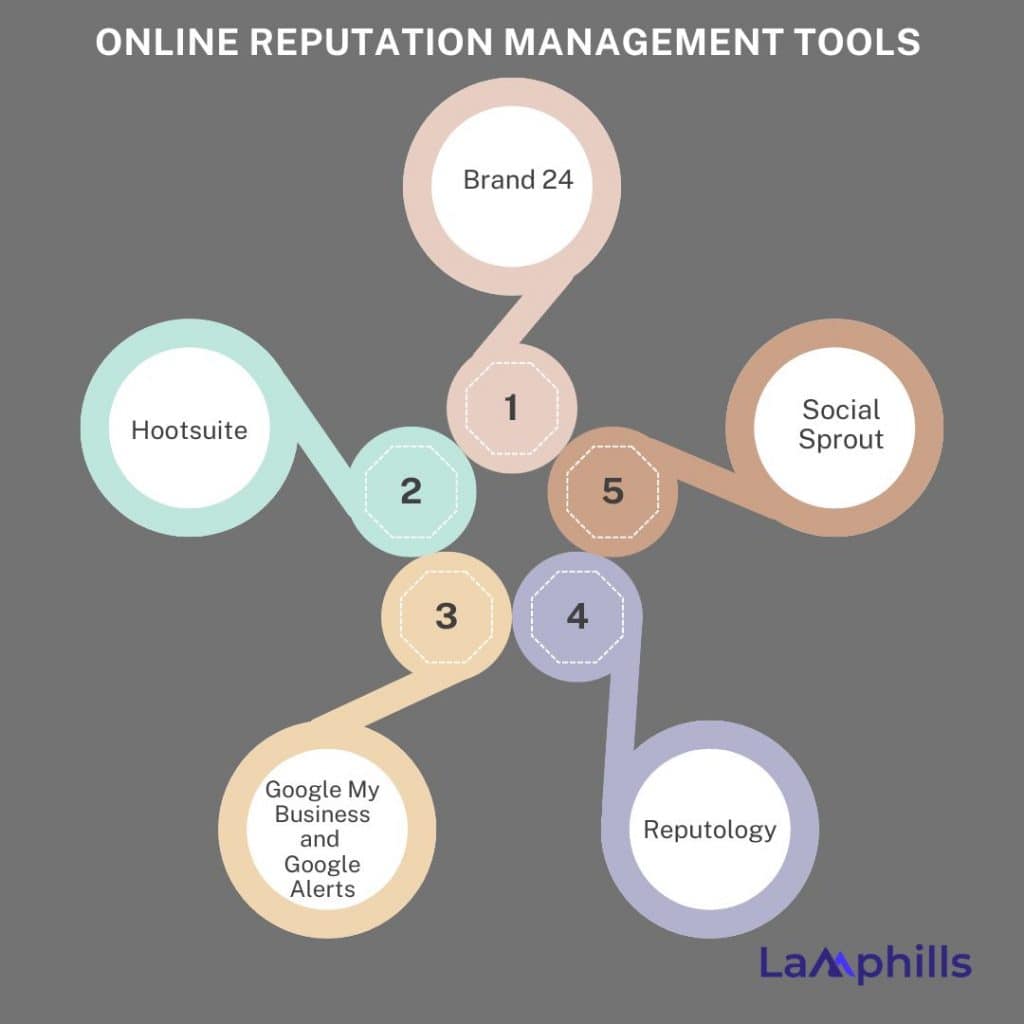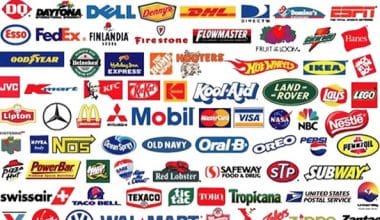As a business owner, I soon discovered that maintaining your online reputation is equally as crucial as offering top-notch services in the current digital environment. At the beginning of my career, I didn’t completely understand how important it was to monitor what people were saying about my brand. One unfavorable review, however, was enough to make me realize how important reputation management is. My own experience with the difficulties of managing my online reputation and the best Google management tools I found to keep up with the times are reflected in this article.
Key Points
- By keeping an eye on what is being said about your brand, reputation management tools enable you to take action before problems damage your reputation.
- You may strengthen your bonds with clients and demonstrate your concern for their experiences by promptly and pleasantly answering their feedback.
- By using these tools, you can identify possible problems early on and take action to keep minor ones from turning into serious emergencies.
- Making use of these tools to manage your internet presence guarantees that search results will feature more good information.
- Regularly responding to reviews and social media mentions increases trust and consumer loyalty.
Overview
A reputation management tool is a piece of software or an online service that helps people or organizations keep an eye on, control, and enhance their online presence. These programs monitor mentions of your company, brand, or even your name on a variety of channels, including blogs, forums, news stories, social media, and review websites. Their goal is to make sure you know how people view you or your company and to assist you in resolving any potential problems before they have a detrimental impact on your reputation.
I didn’t realize how crucial it was to control my online reputation when I initially launched my company—until one unfavorable review began to hurt sales. I became aware of the importance of reputation management tools at that point. I’ve been able to stay up to date on what people are saying about my brand thanks to these tools. They have given me the ability to swiftly address both favorable and unfavorable comments, allowing me to take charge of the issue at hand.
Developing trust has been the largest advantage for me. Through proactive client monitoring and engagement using these technologies, I’ve been able to resolve issues, transform bad circumstances into good ones, and maintain the reputation of my company. Additionally, the tools enable me to be proactive rather than reactive, identifying problems early on before they become more serious ones.
These days, your internet reputation has the power to make or ruin you. You have the knowledge and authority to safeguard and cultivate that reputation with the help of reputation management technologies. They’ve been really helpful to me in preserving a favorable brand image and enhancing client interactions.
Also Read: Top 10 Online Reputation Management Tools for Businesses in 2024
Attributes of Reputation Management Tools
These resources can be quite helpful for upholding a favorable reputation, promptly responding to criticism, and proactively controlling public opinion. Features like these are frequently included in reputation management tools:
- Real-time tracking of brand mentions.
- Examining the overall impression (neutral, negative, or favorable) of reviews or references.
- Giving platforms for interacting with audiences or customers (e.g., answering reviews).
- Supplying information and analysis about internet discussions around your brand.
My Experience: An Extensive Look at Establishing and Safeguarding Your Online Identity
I can recall my initial step in managing an online brand. I believed that maintaining a strong presence only required a website and a few social media profiles, as do many small business owners. However, I thought that if I did a great job serving people with good services, the company’s reputation would follow. Managing a brand’s reputation in the digital age is far more difficult, though, as I soon discovered.
It began with a Google review that seemed harmless. People’s opinions of the company were quickly impacted by one dissatisfied customer’s internet review. The sales suffered, orders were canceled, and potential customers lost faith in the company as a result of that one unfavorable remark. It served as a wake-up call: I needed a strategy and specific tools to monitor the brand’s internet reputation. I learned how important reputation management tools are at this point.
Online Reputation Management Tools
An online reputation management tool assists you in keeping an eye on what people are saying about you online and tracks conversations across several social networks. It enables you to promptly identify any bad conversation from several sources, including reviews, comments, and mentions, so you may react promptly. You can find out if people have a favorable or unfavorable opinion of your brand with the use of features like sentiment analysis. You can remain on top of things and make informed decisions by using its analytics, which provide you with statistics and trends regarding how people engage with your business online.
Reputation management is a proactive process rather than a reactive one, which was one of the first things I discovered on my path. Often, it’s too late by the time a critical remark has caused harm. I required a solution that would enable me to keep an eye on discussions, react promptly, and project a favorable picture across all platforms.
After doing some research, I concluded that responding to reviews was not the only way to manage a brand’s reputation. It required a comprehensive platform that would allow me to respond to and evaluate patterns in addition to monitoring conversations surrounding my brand. During this stage, I experimented with some tools; I’ll discuss my own experience with a handful that caught my attention. Online reputation management tools include the following:
#1. Brand 24
The first tool I used was Brand24. It provided real-time mention tracking on forums, news websites, and social media. The platform’s ease of use initially impressed me. The technology rapidly compiles all mentions into a single dashboard, and you can set up alerts for any brand-related phrase. For me, this was a turning point. I no longer needed to search the internet for discussions about us.
When Brand24 initially alerted me to a mention that I would have otherwise overlooked, I was able to intervene and make a potentially bad situation better. An unanswered query was posted on a forum by a consumer. I was able to react promptly because of Brand24, and the consumer was pleased that I was actively interacting on several channels.
#2. Hootsuite
I then experimented with Hootsuite. I was first drawn to the platform because of its interaction with other social media networks. Having a solution that could handle my brand’s social media strategy and reputation in one location appealed to me.
Using Hootsuite was a smooth experience. I was able to access all of my brand’s interactions, scheduled articles, and mentions in one place thanks to the dashboard. The thorough studies that helped me identify the strengths and weaknesses of the brand were particularly noteworthy. I looked at other programs because Hootsuite didn’t have any deeper analytics that was directly relevant to reputation management.
#3. Google My Business and Google Alerts
I was aware of how crucial Google was to the internet image of the company. Keeping a good presence on Google was essential because reviews are sometimes the first thing consumers encounter when they search for a business. I started using Google Alerts as my first Google-based tool. It is simple to set up and free, and it started delivering alerts as soon as the brand was mentioned online. Although Google Alerts didn’t have many advanced capabilities, it did give a straightforward method of monitoring mentions and reviews. I started to focus more on the Google My Business page as a result.
#4. Reputology
Reputology was one of the tools I discovered during my investigation. I needed a more thorough strategy for managing the online reputation as the company expanded, particularly when it came to managing reviews across several platforms. The fact that Reputology focuses on tracking online reviews drew my attention. From TripAdvisor to Google and Yelp, it offers a unified platform where all reviews are organized, which facilitates my ability to reply promptly.
I recall an instance where a customer gave the company a three-star review due to a small misunderstanding rather than discontent. Reputology’s alert system allowed me to react quickly, resolve the issue, and get the client to update their rating to five stars because they were so pleased with the speedy resolution. I then saw how effective real-time communication is and how these tools can safeguard my brand’s reputation.
#5. Social Sprout
Social media rapidly developed as another important area of concentration, even though review platforms were only one component of the puzzle. On Instagram, Facebook, and Twitter, the company was actively interacting with our audience, so I was looking for a tool that would make scheduling content and reputation monitoring easier.
Sprout Social’s real-time tracking of keywords and brand mentions on all the main social media platforms was what I enjoyed about it. I was able to prevent possible problems before they became more serious as a result. Beyond direct interaction, the comprehensive reporting features allowed me to see how people were responding to the posts and what they were saying about the company.
One instance was a customer tweeting about a purchase that was delayed. Although I missed their first tweet, I was able to intervene before it became a larger problem by using Sprout Social’s listening function. The consumer later complimented the company on our promptness after we settled the issue in private.

Google Reputation Management Tools
Tools for managing your Google reputation can help both individuals and companies to become more visible and drive more visitors to your website. Additionally, it’s crucial for tracking and improving your visibility on local search results pages. Building a stronger presence across well-known local searches with a thorough Google reputation plan gives you even more chances to stand out in your local market. Naturally, eliminating and blocking unfavorable search results remains the main focus of Google search reputation management. However, in general, Google results management is a large topic and a far-reaching technique.
Although Google My Business and Google Alerts were useful, I preferred advanced features that would offer a more thorough examination of how the brand was viewed across Google’s extensive network. I came onto Yext and Reputation.com at that time. Google unquestionably dominates when it comes to online reputation, even though social media and review sites are crucial. Before making any judgments, a significant portion of potential clients will look up your company on Google, and the Google Business page and reviews will be the first thing they see. The following are some uses for Google reputation management tools:
#1. Enhancing Google My Business
Google My Business was one of the most important tools I started using to manage the company’s Google reputation. Using this platform, you may update information, reply to reviews, claim and manage your Google company profile, and even post news or offers straight to your Google page.
I didn’t realize how important it was to keep the Google My Business account current and updated when I originally put it up. I noticed a clear improvement in the way potential customers interacted with the company once we began routinely answering reviews, thanking satisfied clients, and resolving the issues of unhappy ones. Because they could see that we were responsive and engaged, people started to have more faith in my brand.
*#2. Monitoring and Managing Google Reviews
Managing reviews is a crucial component of Google’s reputation management. It’s wonderful to receive a five-star review, but handling ratings that aren’t perfect presents a serious problem. I discovered this firsthand when the company got a two-star review that described their bad experience in great detail. At first, I was unhappy, but I knew I had to deal with it. I thus took the time to write a polite reply that acknowledged their worries and provided a solution. The consumer changed their review to four stars within a week, demonstrating to others that my company values their opinions.
The following are the Google reputation management tools:
#1. BirdEye
I understood that it took more than just checking in once in a while to keep up with these reviews. That’s when I began using BirdEye, a program that focuses on handling reviews on various websites, including Facebook and Google. BirdEye uses one screen to make it easy to keep track and react to reviews. Insights into general customer attitudes were also provided, which helped me see patterns in the feedback and make adjustments where needed.
#2. Reputation.com
In particular, Reputation.com proved to be an exceptionally thorough tool for managing one’s reputation on Google. I was able to handle surveys, social media interactions, and reviews in one location. The ability to examine trends in customer reviews throughout Google was one function that I found quite helpful. To spot persistent issues and take proactive measures to address them, awareness was essential.
A notable example is the increase in evaluations that mentioned customer service’s delayed response times. Using the analytical tools provided by Reputation.com, I was able to link this to particular times when the customer service team was insufficient. Armed with this understanding, I implemented internal adjustments that resulted in increased positive ratings and better customer satisfaction.
#3. Yext
Another useful tool that I looked into was Yext. In addition to its emphasis on maintaining consistent business listings across several platforms, it offers first-rate reputation management tailored to Google. To make sure that every time my brand was mentioned on Google and other platforms, it contained accurate information, I used Yext to clean up it. The number of little errors that were there was alarming, as they might have easily confused customers or unfavorable reviews.
I also saved time by not having to switch between dashboards by using Yext to monitor customer feedback and reply straight from their platform. I liked how Yext’s insights dashboard allowed me to see how the company was doing through search results, and the integration with Google My Business went smoothly.
However, the crucial duty was keeping up with my Google My Business profile. I discovered that swiftly answering reviews had a significant impact on how clients saw my company. I made it a point to respond to any complaints in unfavorable reviews and thank clients for good ones. A customer previously complained about delayed service and left a two-star rating, I recall, answering I was sorry and clarifying the situation. After two days, the review was changed to four stars, highlighting the effectiveness of active engagement in reputation management.
Best Reputation Management Tools for Monitoring Brand Online
I tried a lot of tools before deciding which ones were best for managing, monitoring, and improving the Internet reputation. The following is a list of the top reputation management tools I’ve discovered that regularly provide outcomes:
#1. BrandMentions
A complete picture of how your brand is being viewed is provided by BrandMentions, a comprehensive tool that detects sentiment and keeps track of mentions on blogs and social media. I began utilizing it when I discovered that the brand was being discussed without my knowledge in forums and on odd sites. Nothing is missed with BrandMentions.
#2. Trustpilot
If your company depends a lot on client ratings, Trustpilot is a great platform that lets companies interact with their customers in public while simultaneously gathering reviews. Customers frequently look up Trustpilot evaluations before making purchases, thus for my company, it became a staple for establishing confidence.
#3. Mention
Mention is another useful tool for keeping an eye on the online reputation. On blogs, news websites, and social media platforms, it keeps track of keywords and mentions. I prefer its easy-to-use design and comprehensive statistics, which enable me to determine the source of my company mentions and whether they are positive or bad.
#4. Reputation.com
From social listening to review management, Reputation.com offers a robust array of tools for larger brands or companies with a significant online presence. It provides data and insights to monitor the health of one’s reputation, which I found to be quite helpful as my brand started entering new regions.
Also Read: A 2024 Guide to Corporate Reputation Management (Best Strategies & Tips)
What is a reputation management tool?
In my experience, a reputation management tool is like a safety net for your company’s internet reputation. It helps you keep track of what people are saying about you or your business on social media, review websites, and forums. Tools like Brand24 and Google Alerts have been invaluable to me. When my brand is brought up, they notify me so I can intervene promptly, whether it’s to thank a satisfied consumer or address a problem.
How do you measure reputation management?
A few critical indicators are what I use to gauge reputation management. I start by examining the tone of the conversation, including if it is favorable or negative. Next, I monitor reviews and ratings on websites such as Yelp and Google. Lastly, I take into account the frequency of brand mentions and online interactions. Reputology is one tool that has helped me monitor these KPIs and get better over time.
How to maintain reputation management?
I’ve learned to take the initiative to keep my reputation intact. I frequently use tools to keep an eye on mentions, promptly reply to reviews, both positive and negative, and encourage satisfied clients to post positive evaluations. I also make an effort to interact with my audience on the internet and respond carefully to any criticism, always trying to settle disputes in private. Maintaining a great reputation for my brand has been largely dependent on my continued activity and consistency.
Conclusion
Online reputation management is not something you can ignore. Engaging, monitoring, and improving are ongoing processes. Using these reputation management tools has taught me that taking initiative is essential. Every encounter counts, whether it’s acknowledging compliments or replying to a harsh review. With the use of these technologies, I have been able to strengthen my relationship with my clients while simultaneously safeguarding my brand. Additionally, this procedure has given me a great deal of trust. Make sure you’re taking the proper precautions to safeguard your reputation, which is one of your most valuable assets in the current digital era.
Related Articles
- Personal Reputation Management for Professionals: Balancing Privacy and Visibility
- SEO Reputation Management: How I Protect & Enhance My Online Presence
- 10 Reputation Management Companies Every Brand Needs on Speed Dial
- 9 Reputation Management Red Flags That Scream
- Best Tools for Employee Satisfaction Measurement in 2024






